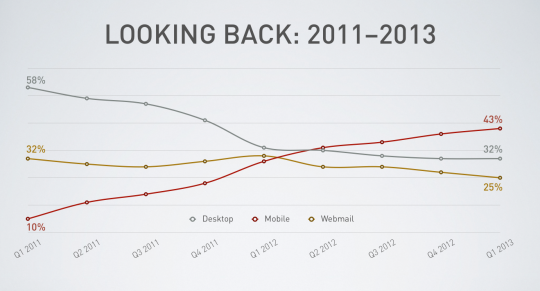Hello! As a new contributor to this blog, I'd like to introduce myself. My name is Dwight Mouton and yes that's a French last name. I'm orginally from the heart of Cajun country, Lafayette, Lousiana. I've been in marketing related roles since I earned my bachelor's degree from the University of Louisiana. Since 1995 my focus has been marketing analytics and the software that marketers use to make their jobs easier and more enriching. When I'm not at work I enjoy spending time with my family of 5 as well as getting together with friends to cycle, going on long solo runs and being a general DIYer around the house.
For my first post I decided to focus on a more general topic based on a panel discussion with CMO's that I attended recently.
While there was a large variance in the discussion topics from eliminating "paid search" from marketing budgets to CMOs and CIOs being BFFs, three main recommendations for marketers came through:
- Measure all the way through the marketing - sales cycle
- Match the content to the product, channel and the customer
- Mobile should be a part of everyday marketing, not a separate "mobile strategy"
The following is a summary of the panelists' discussion on these topics along with my own thoughts and research notes.
- Marketing - Sales Cycle
Marketers should try always to capture sales information at every touch point during the sales process so that they can measure and forecast success. If a marketer measures all of the data and stores it, then they can use it to forecast the results at every stage of the cycle for future campaigns. Often marketers only know the basics such as click-through on an email and what was eventually purchased, but what about all the other steps in the sales cycle? If analysts are not tracking the customer at each stage they don't know that, for example, after the click-through they navigated to different parts of the website before buying, or that they left the site and then came back later to make a purchase, possibly through a different channel. Being able to use this information to forecast results for future campaigns helps to set expectations and allocate resources.
. - Match the content to the customer
Mail is dead, and email is over-used, right? Well, that would depend on what a marketer is selling, the audience they are targeting and the channel they are going through. One example the panel presented related to the use of direct mail for highly targeted B2B campaigns. So much marketing communication has gone to email that a really good direct mail piece will have almost no competition when it appears on a target's physical desk. Because the message is so targeted, a marketer can spend more to make the mail piece highly impactful. This is also relevant in digital, where it is even easier to vary a message. Marketing analysts should use the data captured to create communications that fit the audience based on their segment and the offer. Campaigns that make use of Social Media apply as well. Multi-channel campaigns do not mean that the same message has to go out to all channels. The message and offers should be tailored for the customer in the channel that has the highest likelihood of success.
. - Mobile Strategy:
CMO's and marketing directors are often asked "what is your mobile strategy". We are now at a point where mobile should just be seen as another channel where content, messaging, segmentation, and format should match it. Customers check email via a mobile device more than any other method and if it contains a link that drives to a website it should display a mobile friendly version. The content should also be optimized for the mobile device, not just a shrunken version of the web site. This also affects more than just promotional material. Customers are opening order confirmations, weekly newsletters and legal notifications via the mobile device that typically have links to the corporate website.As you can see we covered a wide varety of topics but this last one is likely the wake up call to many marketers. The chart below from Litmus shows how fast mobile has become the prominent means of opening email, from only a 10% share in Q1 2011 to 43% at the same time in 2013.
.
 ..
..
Based on what that chart shows, it seems that prioritizing how you create content for mobile devices should be a high priority for marketers looking to succeed in today's market.
These ideas were inspired by the discussion at a recent local American Marketing Association meeting. It was an annual CMO panel luncheon and this year the panelists were from Brooks Bell, The Redwoods Group, Café Press, Quintiles and Bronto Software.
Let me know your thoughts on these topics and if you were at the luncheon, feel free to introduce more. Thank you for following, and stay tuned for more of my thoughts on other aspects of marketing.
